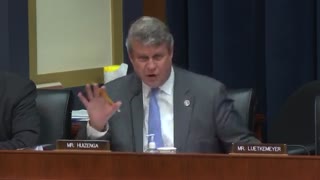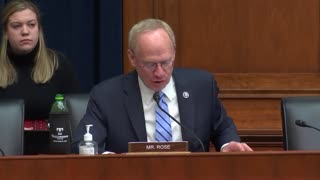U.S. House Committee on Financial Services: Oversight of Prudential Regulators: Ensuring the Safety, Soundness, Diversity...
On Wednesday, November 16, 2022, at 10:00 a.m. (ET) full Committee Chairwoman Waters and Ranking Member McHenry will host a virtual hearing entitled, “Oversight of Prudential Regulators: Ensuring the Safety, Soundness, Diversity, and Accountability of Depository Institutions."
Witnesses for this one-panel hearing will be:
• The Honorable Michael Barr, Vice Chairman of Supervision, Board of Governors of the Federal Reserve System
• The Honorable Martin Gruenberg, Acting Chairman, Federal Deposit Insurance Corporation
• The Honorable Todd Harper, Chairman, National Credit Union Administration
• Mr. Michael Hsu, Acting Comptroller of the Currency, Office of the Comptroller of the Currency
Overview
Prudential regulation of insured depository institutions is divided among four Federal regulators, consisting of the Board of Governors of the Federal Reserve System (Fed), Federal Deposit Insurance Corporation (FDIC), Office of the Comptroller of the Currency (OCC), and the National Credit Union Administration (NCUA). Section 1108 of the Dodd-Frank Wall Street Reform and Consumer Protection Act (Dodd-Frank) created the position of Vice Chairman for Supervision for the Fed and requires the Vice Chairman to testify before the Committee regarding the Fed’s supervision and regulation of depository institutions and other financial firms. This hearing fulfills that requirement while allowing the Committee to provide oversight of all four Federal regulators with prudential regulatory duties. This memo provides background on depository institutions and an overview of supervisory and regulatory developments.
Background on Depository Institutions
As of June 30, 2022, there were 4,771 FDIC-insured banks. Most of these institutions are community banks; for example, 4,333 of these banks held less than $10 billion in total assets (90 percent). Between the second quarter of 2021 and the same quarter this year, these banks made $64.4 billion in profits, and total assets rose by more than $944 billion (4.1% increase) to nearly $23.7 trillion. Total loans and leases outstanding held by these banks at the end of June 2022 increased to $11.7 trillion (8.4% increase). In addition, there were 4,853 NCUA-insured credit unions with 132.6 million members as of June 30, 2022. Most credit unions tend to be similar in size to small banks. At the end of June 2022, nearly 86% of credit unions had less than $500 million in assets.4 Between the second quarter of 2021 and the same quarter this year, credit union assets increased 8.1% to $2.14 trillion. Total loans outstanding held by these credit unions increased to $1.39 trillion (16.2% increase).
Diversity in Banking
Prudential regulators play a role in promoting diversity in the banking system. For example, each regulator maintains an Office of Minority and Women Inclusion (OMWI) and is required to promote and preserve minority depository institutions (MDIs). The OMWIs record, report, and encourage diversity representation at each regulator and across those entities regulated. According to the latest agency reports, there were 144 MDI banks with a combined $328.7 billion total assets, 509 MDI credit unions with a combined 5.1 million members and $65.5 billion total assets, and 2,620 low-income designated credit unions. Of the 1,380 certified community development financial institutions (CDFIs), there were 320 CDFI banks and 472 CDFI credit unions.8 As part of the Consolidated Appropriations Act for 2021, Congress provided $12 billion in capital investments and grants to support MDIs and CDFIs and the communities they serve; $9.5 billion of those funds have been deployed to date. Banking regulators have several initiatives designed to support MDIs and CDFIs. For example, in September 2021, the FDIC launched the Mission-Driven Bank Fund to channel private capital to MDI and CDFI banks. COVID-19 Pandemic Banking Trends
At the onset of the pandemic, banking regulators encouraged financial institutions to work with affected customers, including through loan modifications and forbearance.12 According to the Fed, in the second half of 2021, banks reported lower delinquency rates across loan categories. Furthermore, as government pandemic programs ended, loan modifications in the fourth quarter of 2021 fell to $134 billion, which was less than one-quarter of their peak ($621 billion) in the second quarter of 2020. The Fed also reported that low mortgage rates in 2021 spurred a wave of refinancing, but that refinancings reached a 22-year low this year in light of interest rates going...
-
 4:58:50
4:58:50
R.C. Davis
1 year agoU.S. House Committee on Financial Services: Consumers First: Semi-Annual Report of the Consumer Financial Protection Bureau
197 -
 1:20:54
1:20:54
R.C. Davis
1 year agoU.S. House Committee on Financial Services: Unfinished Business: A Review of Progress Made and a Plan to Achieve Full Economic Inclusion for Every American
95 -
 25:00
25:00
Midas Gold Group
1 year agoNo Financial Safety with the New Republican Congress | The Gold Standard 2302
63 -
 3:24:03
3:24:03
The Union Herald
1 year agoHouse Financial Services Hearing on Oversight of Prudential Regulators
1 -
 3:28:56
3:28:56
Watchman's Duty
1 year agoFDIC Transparency with Bank Bail-in Systemic Resolution Advisory Committee 11-9-22
1.58K4 -
 25:04
25:04
Midas Gold Group
1 year agoThe Risky Banking Sector | The Gold Standard 2319
110 -
 25:04
25:04
Midas Gold Group
8 months agoHow to Protect Your Wealth | The Gold Standard 2337
78 -
 25:02
25:02
Midas Gold Group
7 months agoWarning about the Safety & and Value of Your Money | The Gold Standard 2344
145 -
 25:03
25:03
Midas Gold Group
1 year agoThe Calm Before the (Financial) Storm | The Gold Standard 2322
927 -
 2:26:23
2:26:23
The Union Herald
9 months agoHouse Financial Services Hearing on Revamping and Revitalizing Banking in the 21st Century
2